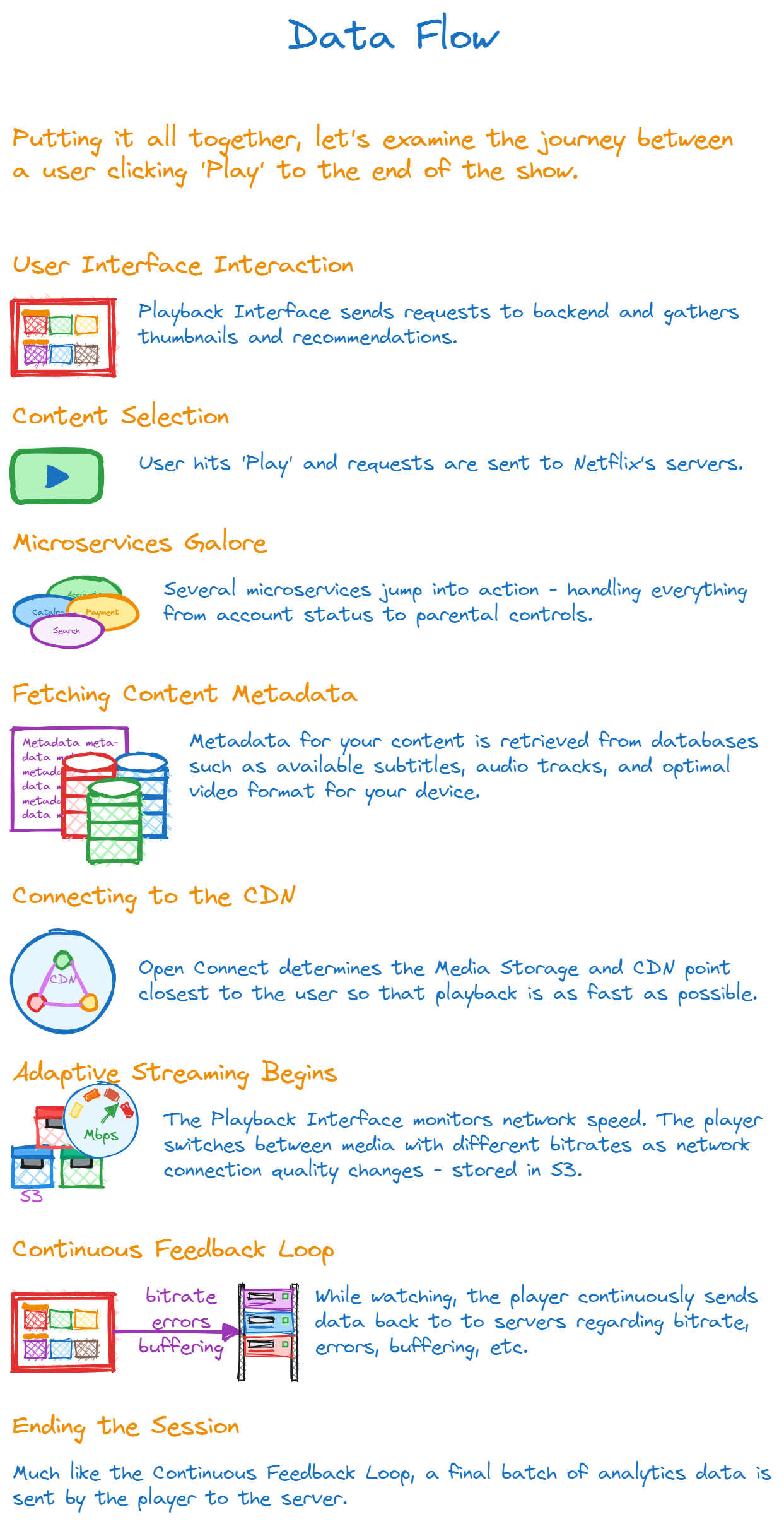The Symphony of Interaction: How Core Components and Servers Sing Together
Understanding Netflix's infrastructure is a bit like unraveling the mysteries of a grand orchestra. Each instrument (or component) plays its own vital part, but it's the harmony they create together that makes the music (or, in this case, streaming) come alive. Let's follow the journey of a user's request, from the moment they hit 'play' to the final frame of their chosen content.

User Interface Interaction: It all starts when you decide to take a break and pick a title. As you browse, the Playback Interface sends requests to the backend, fetching metadata, thumbnails, and recommendations. This is where our initial interaction with the Recommendation System occurs.
Content Selection: Once you've chosen, say, a gripping thriller, and hit 'play', the real magic begins. Your device sends a request to Netflix's servers.
Microservices Galore: Netflix doesn't have one monolithic server handling your request. Instead, a myriad of microservices (think mini-applications) jump into action. These handle everything from verifying your account status, checking regional content licenses, to even adjusting for parental controls.
Fetching Content Metadata: The Databases spring to life. Systems like Cassandra or DynamoDB retrieve essential metadata about your chosen content - like where the actual video files are stored, which format suits your device best, and what subtitles or audio tracks are available.
Connecting to the Content Delivery Network (CDN): With the metadata in hand, the system then reaches out to the closest Media Storage and CDN point. Netflix uses its globally distributed system, Open Connect, ensuring that the actual video content is served from a location nearest to you. This is why, even in places with not-so-great internet, you can still get a buffer-free experience.
Adaptive Streaming Begins: As the content starts streaming, the Playback Interface monitors your connection quality. If you've ever noticed the video quality shift during playback, that's adaptive bitrate streaming at work. Depending on your internet speed, the player will switch between different quality versions of the video, stored in the Media Storage, ensuring smooth playback.
Continuous Feedback Loop: While you're engrossed in the storyline, the player continuously sends back information to the servers. This includes data on buffering rates, bitrates achieved, and any errors encountered. This feedback not only helps in immediate playback adjustments but also aids in long-term system improvements.
Ending the Stream: Once the credits roll and you're left pondering the plot twists, the streaming session doesn't end abruptly. The player sends a final batch of analytics data, ensuring any feedback, like if you had to manually adjust subtitles or experienced any hiccups, is recorded.
This entire process, though broken down into steps, occurs within seconds. It's a testament to the intricate, yet beautifully orchestrated dance between components, servers, and data flows. Every part, from databases to servers, works in tandem, ensuring that your movie night goes off without a hitch.


